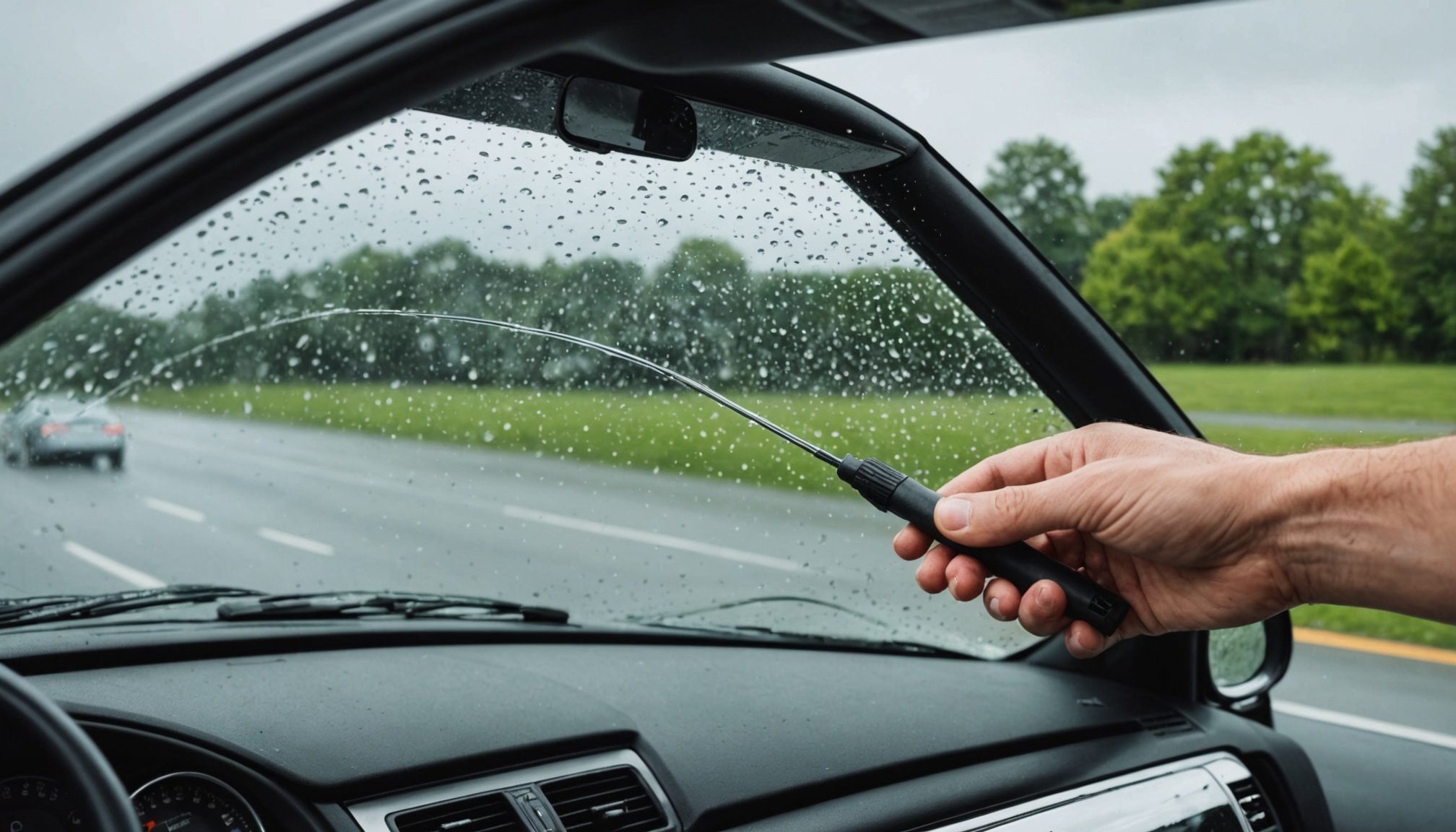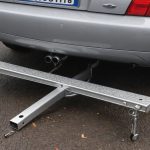Ultimate Guide to Windshield Wiper Replacement: Achieve Perfect Clarity During Stormy Weather
When driving, especially in adverse weather conditions, having clear visibility is crucial for safety. One of the often-overlooked but vital components of your car that ensures this clarity is the windshield wipers. In this comprehensive guide, we will delve into the importance of maintaining and replacing your windshield wipers, providing you with the knowledge and practical tips to keep your windshield clear and your driving experience safe.
Why Maintaining Windshield Wipers is Crucial
Maintaining your windshield wipers is not just a routine task; it is essential for ensuring clear visibility and safe driving. Here are a few reasons why you should pay close attention to your wiper blades:
Have you seen this : Crucial safety practices for safely managing and discarding hybrid vehicle batteries
- Clear Visibility: Properly functioning wiper blades are critical for clearing rain, snow, and other debris from your windshield. Without them, your visibility can be severely impaired, increasing the risk of accidents[1].
- Prevent Damage: Over time, dirt, debris, and harsh weather can cause wiper blades to deteriorate. This can lead to streaky windows, squeaking sounds, or even scratches on your windshield. Regular maintenance extends the lifespan of your wiper blades and prevents damage to your auto glass[1].
- Enhanced Safety: Clear visibility is not just about comfort; it is about safety. In stormy weather, being able to see the road clearly can be the difference between a safe journey and a potentially hazardous one.
How to Clean and Maintain Your Windshield Wipers
Before we dive into the replacement process, it’s important to understand how to clean and maintain your existing wiper blades. Here are some steps to follow:
Cleaning the Wiper Blades
- Prepare a Solution: Mix warm soapy water and use a clean cloth or sponge to gently wipe the blades. This will remove dirt and grime that can reduce the efficiency of your wipers[1].
- Handle Stubborn Residues: For stubborn residues like tree sap or bugs, lightly scrub the blade with a damp soft cloth until the surface is clean.
- Regular Inspections: Regularly inspect your wiper blades for signs of wear, such as leaving streaks, skipping, or failing to clear the windshield entirely. These are indicators that your blades need replacement[1].
Adjusting and Positioning the Wiper Arms
- Proper Alignment: Ensure that your wiper arms are properly aligned and positioned. Misaligned or improperly positioned wiper arms can lead to uneven wear on the rubber blade, reducing their effectiveness and potentially causing damage to the windshield[1].
- Cold and Hot Weather Care: In freezing temperatures, ensure that ice does not build up on the windscreen wipers, as this can make them less effective and increase the risk of tearing the rubber blade. In hot weather, prolonged exposure to high temperatures can cause the rubber blade to dry out, harden, or crack[1].
Signs You Need to Replace Your Windshield Wipers
Knowing when to replace your windshield wipers is as important as maintaining them. Here are some signs that indicate it’s time for a replacement:
Also to see : Understanding the safety hazards of lowering your vehicle: essential insights you must consider
- Streaks and Skipping: If your wiper blades are leaving streaks or skipping across the windshield, it’s time to replace them.
- Squeaking Sounds: Squeaking sounds from your wipers can indicate worn-out blades.
- Failure to Clear: If the blades are not clearing the windshield properly, it’s a clear sign that they need to be replaced.
- Scratches on the Glass: Old blades can cause scratches on the windshield, compromising your visibility[1].
How to Replace Your Windshield Wipers
Replacing your windshield wipers is a relatively straightforward process, but it requires some attention to detail to ensure it is done correctly.
Choosing the Right Wiper Blades
- Vehicle Specifications: Ensure that the new wiper blades fit your vehicle’s specifications. You can find this information in your owner’s manual or on the manufacturer’s website.
- Weather Conditions: If you live in an area with extreme weather conditions, consider upgrading to silicone blades. These blades are known for their durability and superior performance, especially in hot weather. They resist cracking and maintain their elasticity longer than traditional rubber blades[1].
Steps for Replacement
- Purchase the Correct Blades: Buy wiper blades that match your vehicle’s specifications.
- Remove the Old Blades: Pull the wiper arm away from the windshield and press the tab or button that releases the old blade. Gently pull the blade away from the arm.
- Install the New Blades: Align the new blade with the wiper arm and click it into place. Ensure it is securely attached.
- Test the Wipers: Turn on your windshield wipers to ensure they are working smoothly and clearing the windshield effectively.
Additional Tips for Optimal Performance
Here are some additional tips to ensure your windshield wipers perform at their best:
Clean the Windshield Regularly
- Remove Debris: Dirt, tree sap, bird droppings, and other residues can create friction, causing the wiper blades to struggle and leaving unsightly streaky windows. Regularly clean your windshield to ensure a smooth, clear surface for the blades to work on[1].
Check and Maintain Other Car Components
- Tire Pressure: Properly inflated tires can improve traction and reduce road noise, which is especially important during adverse weather conditions[2].
- Fluid Levels: Check your brake fluid, coolant, power steering fluid, and washer fluid regularly. Low or contaminated fluid levels can affect the performance and safety of your car[2].
- Battery and Lights: Regularly check your car’s battery and lights to prevent unexpected breakdowns and ensure all lights are functioning properly[2].
Comparative Analysis of Different Wiper Blade Types
Here is a comparative analysis of different types of wiper blades to help you make an informed decision:
| Type of Wiper Blade | Material | Durability | Performance in Hot Weather | Performance in Cold Weather | Cost |
|---|---|---|---|---|---|
| Traditional Rubber Blades | Rubber | Medium | Fair | Fair | Low |
| Silicone Blades | Silicone | High | Excellent | Excellent | Medium |
| Beam-Style Blades | Rubber/Silicone | High | Good | Good | Medium |
| Winter Wiper Blades | Rubber with special coating | High | Fair | Excellent | High |
Practical Insights and Actionable Advice
Here are some practical insights and actionable advice to keep in mind:
- Regular Maintenance: Make it a habit to clean your wiper blades regularly and inspect them for signs of wear.
- Seasonal Checks: Perform frequent tests during different seasons to identify signs of wear and ensure your wipers are functioning optimally.
- Proper Installation: Ensure that your new wiper blades are installed correctly to avoid any misalignment or improper positioning.
- Weather Precautions: Take steps to protect your wipers from harsh weather conditions, such as using windshield covers or parking in a garage during extreme weather.
Quotes and Expert Opinions
- “Maintaining your windshield wipers is a simple yet effective way to enhance safety and save on costly replacements. Regular cleaning, inspection, and timely replacement of your wiper blades ensure optimal performance and clear visibility in all weather conditions.”[1]
- “Delaying maintenance can lead to more expensive and time-consuming repairs down the road. Regular checks and maintenance are key to keeping your car in top condition.”[2]
Replacing your windshield wipers is not just a routine maintenance task; it is a critical step in ensuring your safety on the road, especially during stormy weather. By following the steps outlined in this guide, you can achieve perfect clarity and peace of mind while driving.
Here is a detailed bullet point list summarizing the key points:
- Clean and Maintain Wiper Blades: Regularly clean your wiper blades with warm soapy water and inspect them for signs of wear.
- Replace Wiper Blades: Replace your wiper blades when they show signs of wear, such as leaving streaks or squeaking sounds.
- Choose the Right Blades: Select wiper blades that fit your vehicle’s specifications and consider upgrading to silicone blades for better performance in extreme weather.
- Proper Installation: Ensure correct installation of new wiper blades to avoid misalignment.
- Regular Checks: Perform frequent tests during different seasons to ensure your wipers are functioning optimally.
- Maintain Other Car Components: Regularly check tire pressure, fluid levels, battery, and lights to ensure overall car performance and safety.
By adhering to these guidelines, you can ensure your windshield wipers deliver reliable, streak-free performance, keeping you prepared for any journey ahead.






